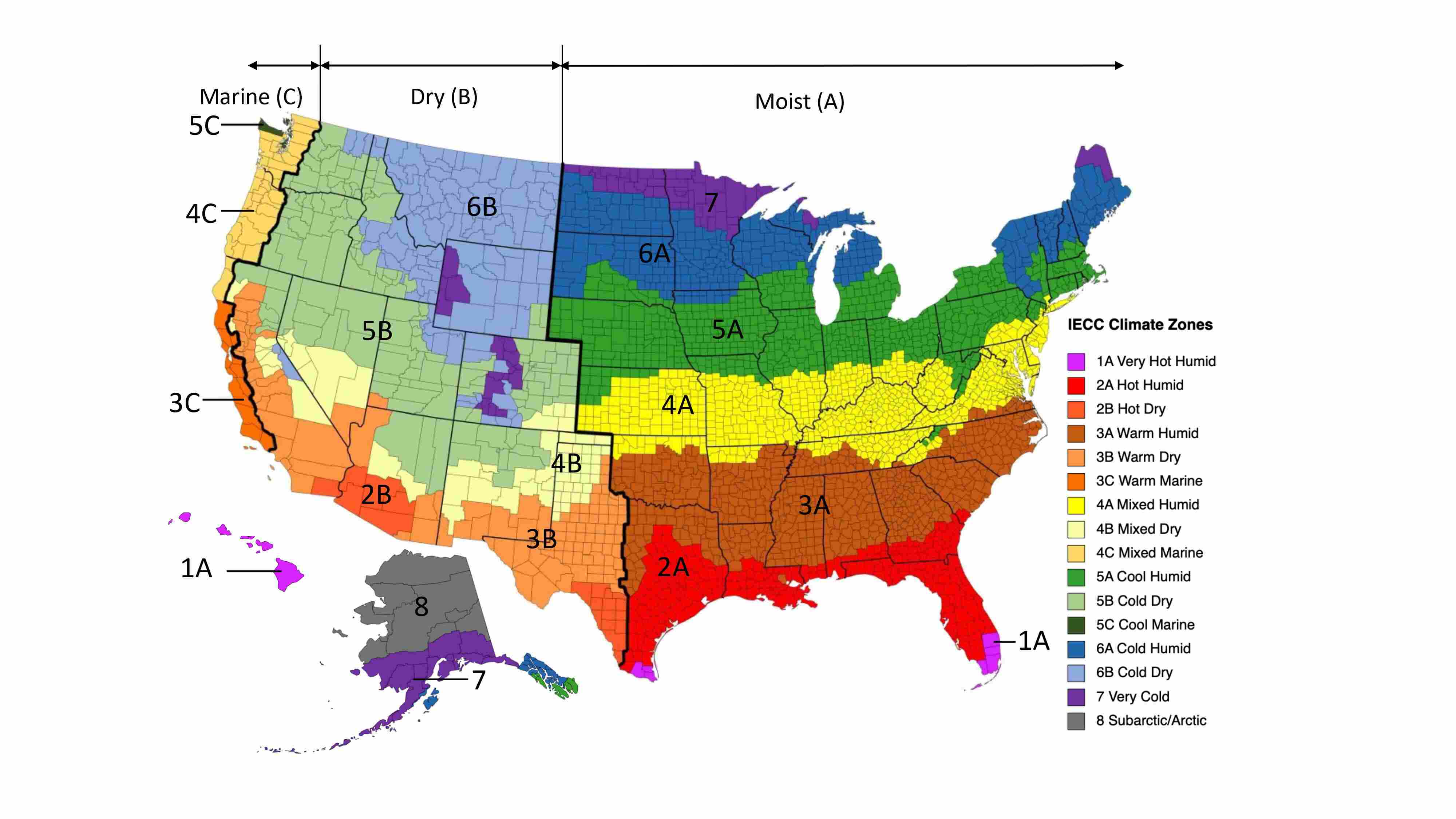
Climate zones play a crucial role in determining the types of weather patterns that occur in different regions around the world. From icy tundras to sweltering deserts, our planet is home to a wide array of climates. Understanding these climate zones is essential for various reasons, including agriculture, travel, and even urban planning.
In this article, we will explore 18 astounding facts about climate zones that will leave you fascinated and better informed about the diverse climatic conditions that exist on our planet. Whether you are a weather enthusiast, a geography buff, or simply curious about the world we live in, these facts will surely captivate your interest.
Key Takeaways:
- Climate zones determine weather patterns and impact agriculture, tourism, and energy consumption. They are dynamic and ever-changing, influencing everything from fashion to natural landscapes.
- The Earth is divided into five main climate zones, each with unique characteristics. From the scorching tropics to freezing polar regions, climate zones shape our planet’s diverse and vibrant environments.
Climate Zones Define the Earth’s Weather Patterns
Climate zones are the primary drivers of weather patterns on Earth. These zones are defined by various factors such as temperature, precipitation, and vegetation, which contribute to the distinct climatic conditions experienced in different regions.
The Earth is Divided into Five Main Climate Zones
The world is divided into five main climate zones: tropical, dry, temperate, continental, and polar. Each of these zones has its unique characteristics and weather patterns, making our planet a diverse and vibrant place to live.
The Tropics Are Known for Their Hot and Humid Climate
The tropical climate zone, located near the equator, is characterized by high temperatures and abundant rainfall. It is home to lush rainforests and diverse ecosystems, making it one of the most biodiverse regions on Earth.
The Sahara Desert is in the Dry Climate Zone
The dry climate zone is known for its arid landscapes and limited precipitation. The Sahara Desert, the largest hot desert in the world, is situated in this zone and showcases the extreme conditions found in these areas.
The Temperate Climate Zone Has Four Distinct Seasons
The temperate climate zone experiences four distinct seasons: spring, summer, autumn, and winter. This zone is characterized by moderate temperatures and a variety of vegetation, including deciduous forests and grasslands.
Continental Climate Zones Have Extreme Temperature Fluctuations
Continental climate zones, found in the interior parts of continents, are known for their extreme temperature fluctuations. These areas can experience scorching summers and freezing winters, making life challenging for the plants and animals that inhabit them.
The Polar Regions Have Freezing Temperatures Year-Round
The polar climate zones, located near the North and South Poles, have freezing temperatures year-round. These icy regions are home to unique wildlife such as polar bears and penguins, adapted to survive in the extreme cold.
Climate Zones Influence Agriculture
The different climate zones play a crucial role in agriculture. Certain crops thrive in specific climatic conditions, and understanding these zones helps farmers determine the best crops to grow in their regions.
Climate Change is Impacting Climate Zones
Climate change is causing significant shifts in climate zones around the world. Rising temperatures and changing rainfall patterns are altering the boundaries of these zones and affecting ecosystems and the lives of many species.
The Equator Falls in the Tropical Climate Zone
The equator, an imaginary line that divides the Earth into the Northern and Southern Hemispheres, falls within the tropical climate zone. This is where you’ll find some of the warmest and most biodiverse regions on our planet.
Climate Zones Can Influence Human Settlement Patterns
Historically, humans have been drawn to settle in regions with favorable climate conditions. Climate zones influence everything from the types of houses built to the agricultural practices and traditions of different communities.
The Köppen Climate Classification System
The Köppen climate classification system is widely used to categorize climate zones based on temperature, precipitation, and vegetation. It provides a standardized way to understand and study the diverse climate patterns across the globe.
Climate Zones Affect Tourism
Tourism is often influenced by climate zones. People seek out specific destinations based on their desired climate and activities such as skiing, beach relaxation, or exploring exotic rainforests.
Climate Zones Impact Energy Consumption
Climate zones can significantly impact energy consumption patterns. Regions with extreme climates may require heavy use of heating or cooling systems, affecting energy demand and the environment.
Climate Zones Shape Natural Landscapes
The distinct characteristics of climate zones shape natural landscapes around the world. From lush forests in temperate zones to vast deserts in dry zones, these landscapes reflect the climatic conditions of a particular region.
Climate Zones Are Forever Changing
Climate zones are not static and can change over time due to natural factors or human activities. The ongoing study of climate zones helps scientists understand these changes and their impacts on our planet.
Climate Zones Impact Animal Migration
Climate zones play a crucial role in animal migration patterns. Many species rely on specific climatic conditions for breeding, feeding, or hibernation, and shifts in climate zones can disrupt these natural cycles.
Climate Zones Influence Clothing and Fashion
The climate zones people live in influence their choice of clothing and fashion trends. Regions with hot climates may favor lightweight and breathable garments, while colder climates call for warm and insulating clothing.
As we’ve discovered, climate zones are dynamic and influential in various aspects of our lives. From shaping weather patterns and agriculture to impacting tourism and fashion, understanding these zones helps us navigate and appreciate the diverse environments that exist on our planet. The 18 astounding facts mentioned here are just a glimpse into the complexity and importance of climate zones in our world.
Conclusion
In conclusion, climate zones are fascinating and play a crucial role in shaping the environment on our planet. From the frigid polar zones to the scorching tropical zones, each one offers unique characteristics and challenges. Understanding climate zones is vital for various industries, including agriculture, tourism, and urban planning.
By exploring the 18 astounding facts about climate zones mentioned above, we can appreciate the diversity and complexity of our planet’s climate systems. From the largest desert to the wettest rainforest, each climate zone holds its own magic and beauty.
As we navigate the challenges of climate change, studying and preserving these climate zones becomes even more critical. By protecting and preserving the delicate balance of each climate zone, we can ensure a sustainable future for generations to come.
FAQs
1. What are the main types of climate zones?
The main types of climate zones are tropical, subtropical, temperate, dry, polar, and highland.
2. How are climate zones determined?
Climate zones are determined by factors such as temperature, precipitation, and the presence or absence of distinct seasonal patterns.
3. Is the climate consistent within a climate zone?
No, the climate can vary within a climate zone due to regional factors such as elevation, proximity to bodies of water, and local topography.
4. What is the impact of climate zones on biodiversity?
Climate zones play a significant role in determining biodiversity by influencing the types of plants and animals that can survive in a particular region.
5. Are climate zones static or do they change?
Climate zones can change over time due to natural fluctuations and human-induced climate change.
6. How do climate zones affect human activities?
Climate zones impact human activities such as agriculture, tourism, and urban planning. Different climate zones require different approaches and adaptations.
7. Can climate zones shift geographically?
Yes, climate zones can shift geographically over long periods due to natural processes and global climate change.
8. Are there any unique characteristics of specific climate zones?
Yes, each climate zone has its unique characteristics, such as the extreme temperatures in polar zones or the abundance of rainfall in tropical rainforest zones.
Was this page helpful?
Our commitment to delivering trustworthy and engaging content is at the heart of what we do. Each fact on our site is contributed by real users like you, bringing a wealth of diverse insights and information. To ensure the highest standards of accuracy and reliability, our dedicated editors meticulously review each submission. This process guarantees that the facts we share are not only fascinating but also credible. Trust in our commitment to quality and authenticity as you explore and learn with us.


